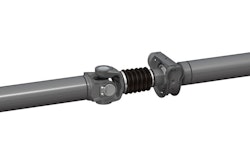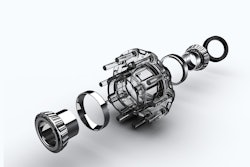
If you haven’t noticed, the pace of business is changing. Technology is allowing new, disruptive companies to enter, evolve and transform industries faster than long-time companies within them can adapt. Traditional business practices are breaking down.
In the world of wholesale distribution, Dirk Beveridge defines these disruptions as “tectonic, seismic waves of change” that will rewrite how products are bought and sold. In the aftermarket, where e-commerce looms as the ultimate disrupter, Beveridge says distributors relying on out-dated business models to drive future success are digging their own graves.
How customers buy truck parts has forever shifted.
During a GenNext webinar Wednesday, Beveridge identified all the ways the distribution has been disrupted, and offered attendees his best advice for how to combat those changes and update their business to remain successful in the independent aftermarket to come.
Looking specifically at disruption, Beveridge lists eight trends that are negatively impacting conventional distribution methods:
- Generational shift of employees and customers
- Disruptive technology
- Changing customer requirements
- Intensified competition
- Alternative channels
- Commoditization of serving existing markets
- Transfer of power to customers and end users
- Compressed margins
He says how much each item impacts a distributor varies from customer to customer, but ultimately each one adds a kink to the old-fashioned relationship distribution method. But hindrances that they may be, Beveridge believes the conventional distribution channel isn’t dead. Distributors still have the experience and expertise to move product—assuming they are willing to change for their customers.
“‘How do we create a sustainable, relevant and profitable business?’ That’s your new job description,” Beveridge says. And he believes the answer is innovation.
“I think innovation is ‘Leading our customers to a better future for which they are willing and able to reward you.’ But where does that come from? Who innovates? I believe it is the innovative distributor,” he says. “Every distributor that wins the future will be an innovative distributor.”
And how to become an innovative distributor, Beveridge provided attendees on Wednesday four valuable tips:
Vision and culture: The innovative distributor understands vision drives innovation, Beveridge says. Without vision there is no innovation, change, transfer at all. Beveridge says distributors need to be able to see where your business is going and what you are going to become. If you cannot do that, he says “I guarantee the status quo will continue to kill you.” He adds vision is a future reality a distributor really believes is possible with committed effort. While it’s easy to get lost in the fog of uncertainty in disruptive times, Beveridge says finding a view of the future provides an enormous advantage.
Value proposition: Beveridge says too many distributors are trapped in a world of sameness. He says three value providers that customers used to pay you for are now commoditized: relationships, knowledge, logistics. Beveridge says relationships, in particular, are being redefined in front of our very eyes. How a customer defines and values relationships may not be the same as you. He says the donuts and golf aren’t necessarily the answer anymore, and they don’t provide value the way they used to for end users. Beveridge paraphrases Amazon’s Jeff Bezos, on his purchase of the Washington Post, “Our touchstone will be our customers, understanding what they care about.”
Business model: It’s also important to remember your relevancy is not guaranteed. Beveridge says only 71 of the original Fortune 500 are still on the acclaimed list, and the average positioning of companies on the list is less than a decade. “Eighty-one percent of distributors are operating from an outdated business model,” Beveridge says. He says necessary change comes from evaluating disruptors, determining the tools you can leverage to become required partners for your customers.
Transformative leadership: Finally, Beveridge says the points above all come down to leadership. Companies don’t change. People do. Distributors with a vison and updated value proposition have a leg up over competitors, but those forward-thinking companies still need proactive leadership to implement those changes in a swift manner. As he mentioned with the speed of change, Beveridge waiting until tomorrow to roll a new plan is too late. You needed to do it yesterday.










